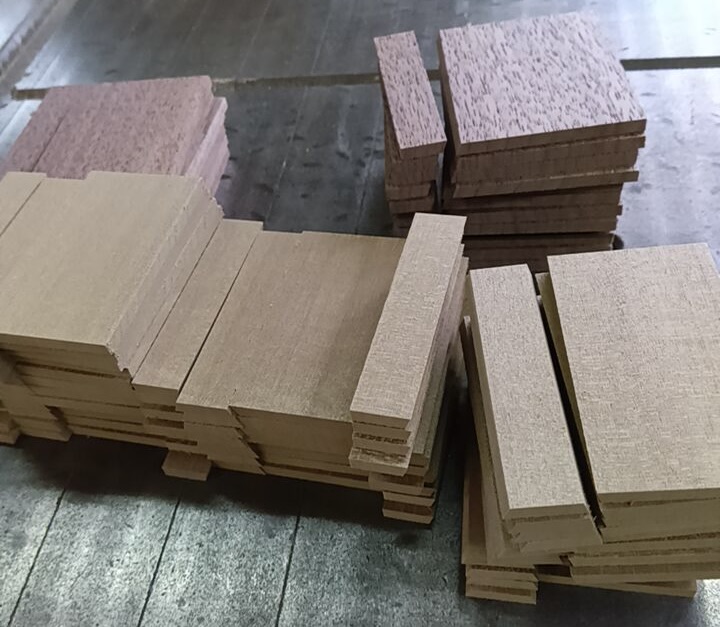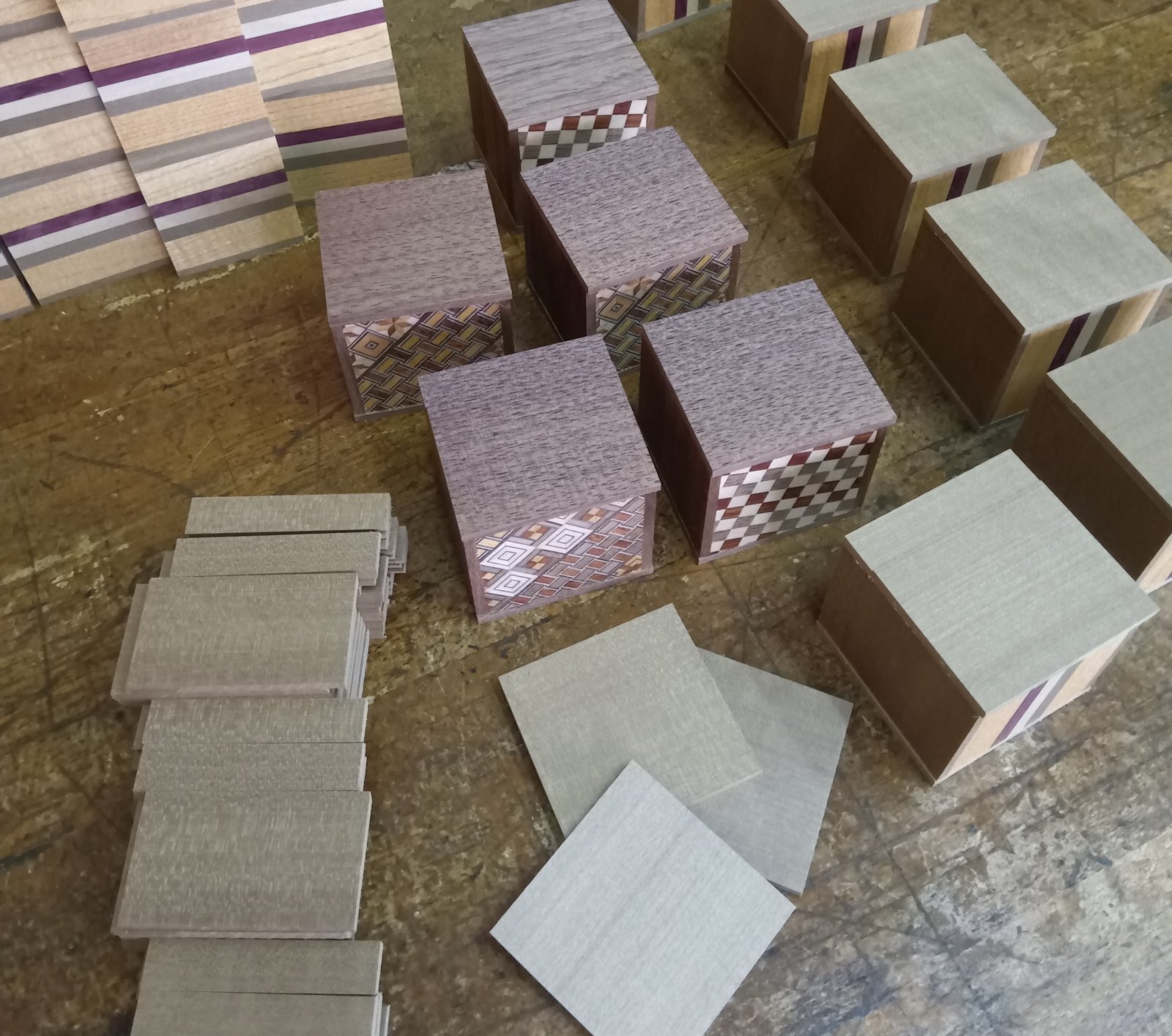Cube 7 steps box (2)
Today, I finished three types of 3-sun 12-step Japanese puzzle boxes that I’ve been working on for a while. In the morning, I checked how they open and tested their movement. Now, I'm going to put them in gift boxes, which is something I need to do as soon as possible. Before placing them in the gift boxes, I will also put them in plastic bags to seal them from the outside air, protecting the puzzle boxes from environmental changes.
and Another important task for today is completing the final panel for the 2-sun cube 7-step boxes, and I’m currently attaching it (photos).
This time, I’ve made two types of sliding panels with slide keys. The materials used are Hoo wood and walnut wood. There’s a significant difference in hardness between the two. Hoo wood is relatively uniform, while walnut wood has considerable variations in hardness and grain depending on the part of the wood. That’s why I need to be more careful about which part of the box I use walnut for. The 2-sun cube box I’m working on has the 7-step mechanism, so there’s only one slide key (kannuki). The two panels I’m attaching last include one panel divided into three sections with the slide key, while the other panel is a single fixed piece that doesn’t move.
Therefore, when using walnut wood, I make sure to use the parts with straighter grain and softer texture for the sliding key panel. The sections with more curved or irregular grain are reserved for the fixed panel. Since the sliding key panel has fewer fixed points to the box, it can warp more easily if the grain isn’t straight. That’s why I carefully choose straighter, more stable pieces for the sliding key panel.
For boxes like this one, where there is only one slide key (such as with a 5-step or 7-step mechanism), I attach both panels—the sliding key panel and the fixed panel—at the same time. As a result, I’ve finished attaching the final two panels today. Starting tomorrow, I can move on to the painting process😊
and Another important task for today is completing the final panel for the 2-sun cube 7-step boxes, and I’m currently attaching it (photos).
This time, I’ve made two types of sliding panels with slide keys. The materials used are Hoo wood and walnut wood. There’s a significant difference in hardness between the two. Hoo wood is relatively uniform, while walnut wood has considerable variations in hardness and grain depending on the part of the wood. That’s why I need to be more careful about which part of the box I use walnut for. The 2-sun cube box I’m working on has the 7-step mechanism, so there’s only one slide key (kannuki). The two panels I’m attaching last include one panel divided into three sections with the slide key, while the other panel is a single fixed piece that doesn’t move.
Therefore, when using walnut wood, I make sure to use the parts with straighter grain and softer texture for the sliding key panel. The sections with more curved or irregular grain are reserved for the fixed panel. Since the sliding key panel has fewer fixed points to the box, it can warp more easily if the grain isn’t straight. That’s why I carefully choose straighter, more stable pieces for the sliding key panel.
For boxes like this one, where there is only one slide key (such as with a 5-step or 7-step mechanism), I attach both panels—the sliding key panel and the fixed panel—at the same time. As a result, I’ve finished attaching the final two panels today. Starting tomorrow, I can move on to the painting process😊

